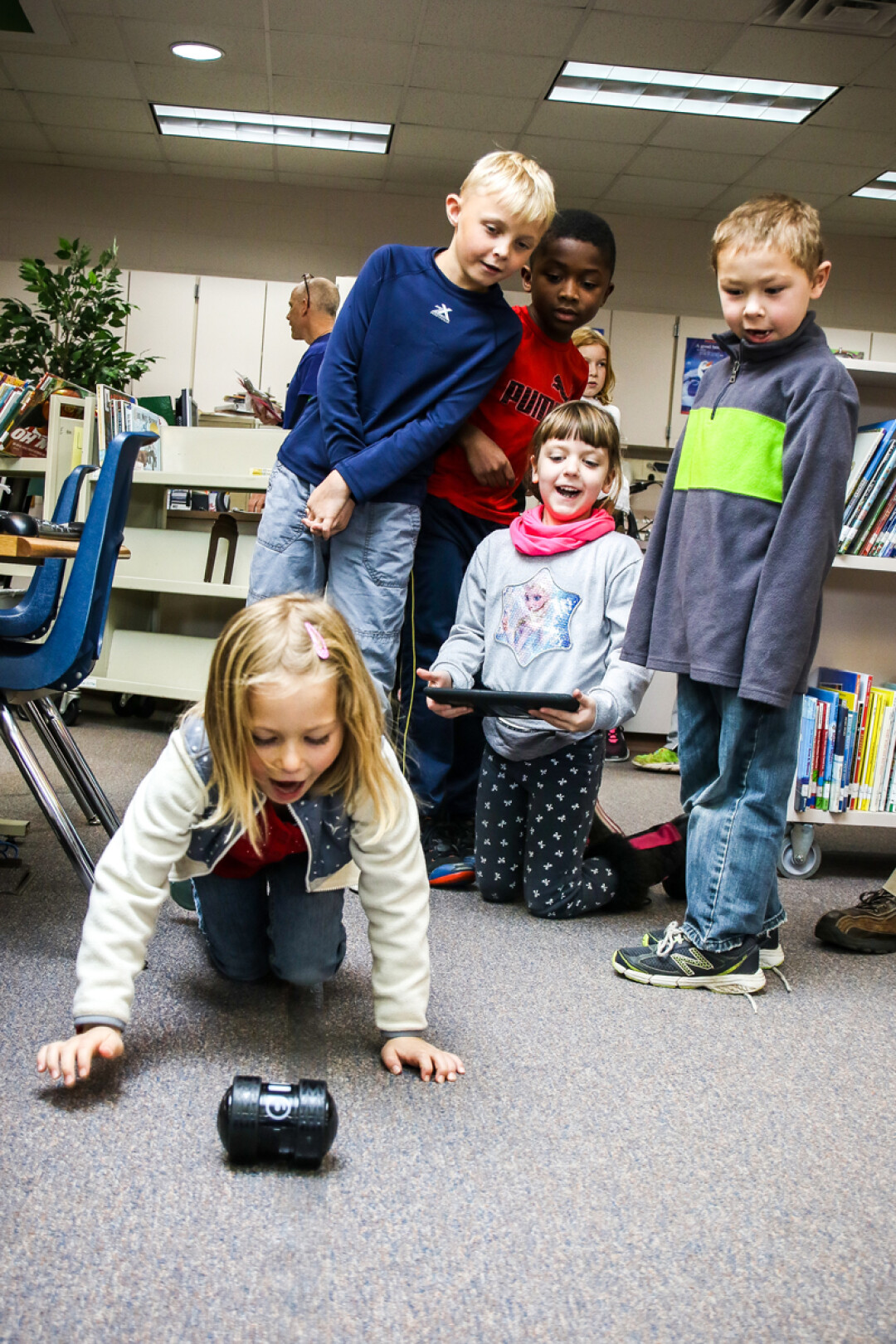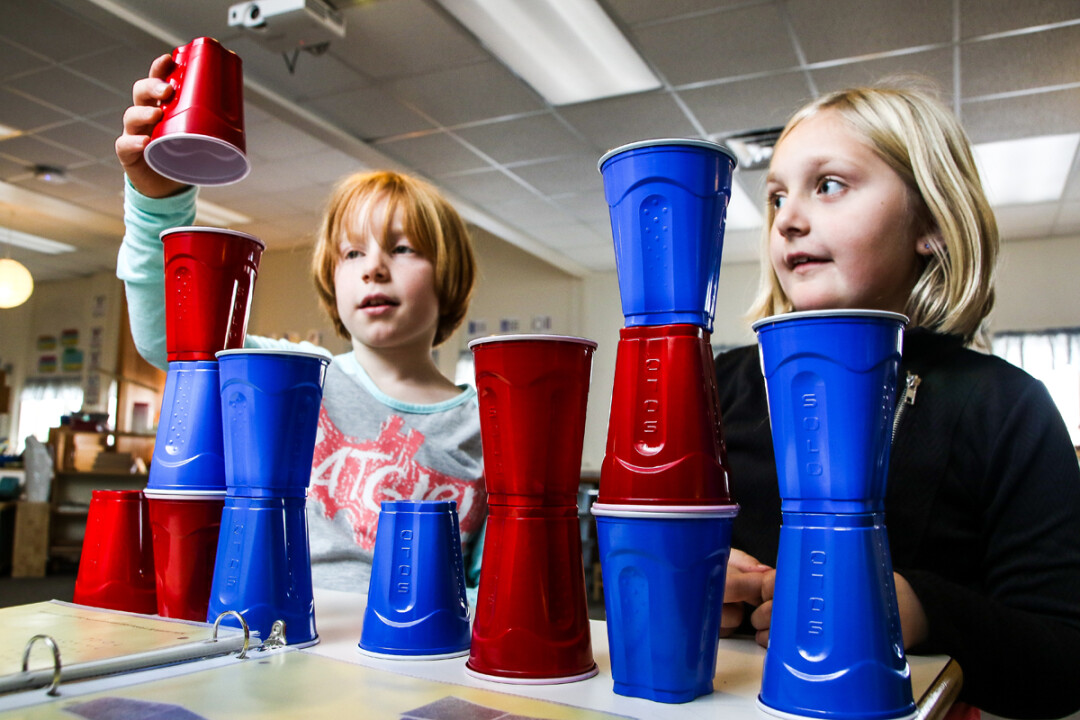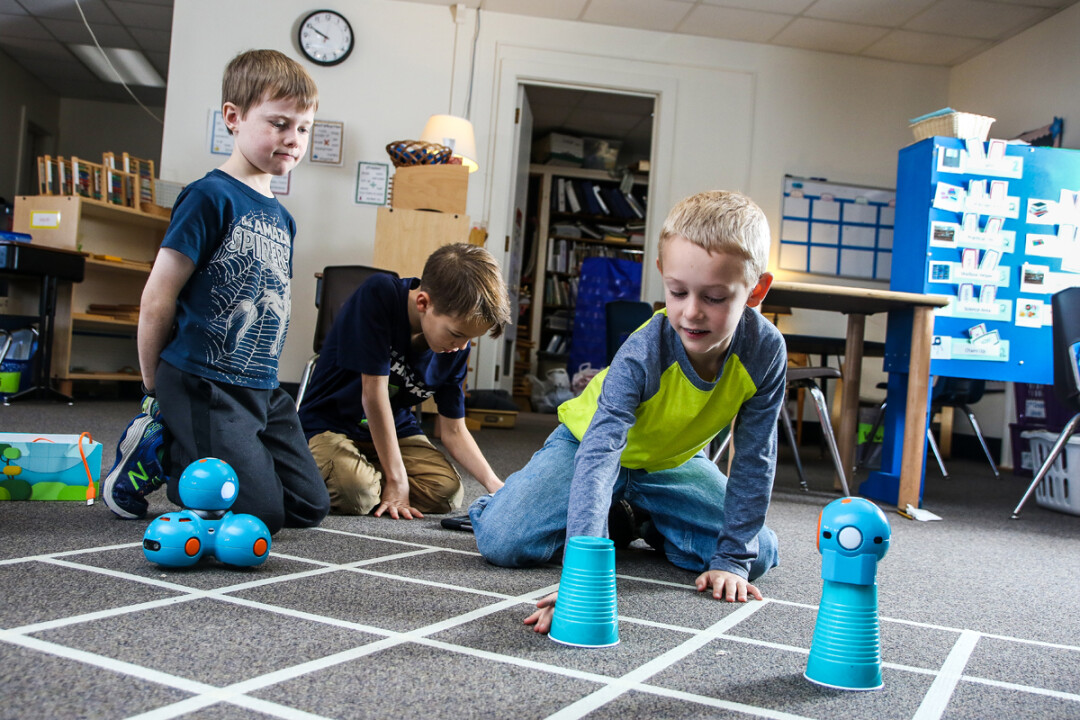Learning to Code: It's Not Just for Teens Anymore
Katie Larson, photos by Andrea Paulseth |
The message inscribed on a Post-it note and passed from one colleague to another during the first professional development day at the Chippewa Valley Montessori Charter School is pretty telling of the misconceptions associated with teaching computer science and coding in the classroom. It read, “I was in your class and thought your kids were playing video games. Now I get it!” Jeremy Harrison, affectionately called Mr. Jeremy by his E1 students and parents alike, anticipated this misconception, so he and Dennis Brylow, a professor at Marquette University and Code.org representative, planned and prepared the day’s events around educating and immersing his colleagues in understanding the importance of teaching computer science at the elementary level.

Code.org is a public nonprofit organization dedicated to enriching classrooms by promoting curriculum based in STEM (that stands for Science, Technology, Engineering, and Mathematics). After being introduced to the free program at a conference, Harrison began using it to some degree in his own classroom over the past two years. Code.org provides comprehensive lesson plans for all levels of students by integrating the use of technology and “unplugged” skills such as using fine gross motor skills, problem solving, and perseverance. As the professional development day progressed, it became clearer to the other educators the program and curriculum being developed at the Montessori school can reach far beyond just “playing video games.”
Creating a learning program centered on the study of computer science encourages students of all ages and grade levels – as well as educators – to gain exposure to the fundamental skills centralized in the world of computer science. So instead of simply assuming kids are gaming in the classroom because it is “fun” and “engaging,” the reality of the situation is the kids are slowly turning from being zombie-like consumers of media (a.k.a. every parent’s nightmare) into creators and inventors of new media and technology (a.k.a. every parent’s dream).

The demand for computer programing positions is strong throughout the country, especially in Wisconsin. According to Code.org, there were more than 500,000 computer science jobs available nationally in almost every industry in 2015; of those positions, recent college graduates filled only 11 percent. Keeping the demands of the future into account, the Montessori school is working to provide students and teachers with access to these new technologies and lessons in an effort to encourage the exploration of new 21st century skills necessary for a competitive job market.
It can be a struggle to connect computer science concepts to core classes at the elementary level, including math, reading, and science. However, Harrison suggests that most teachers are already teaching concepts directly linked to the core of computer science. As an added bonus, the Montessori approach to education allows students to actively engage in the concepts, skills, and ideas being taught through hands-on manipulation and direct application.

Montessori Principal Todd Johnson explains the approach simply. Teaching a child how to read involves a scaffolding approach, meaning it starts with letter recognition, then moves on to phonetics and deciphering. The act of teaching reading is rarely revisited once the student begins to get it, but the more a child practices the skills, the better he or she will become at mastering them. Depending on the complexity of ideas, understanding math and science concepts often requires students to revisit and relearn the concepts, requiring a lot of rote learning.

It is no surprise, then, that reading achievement and growth is high, especially in the Montessori school, but math achievement and growth isn’t quite where Johnson expects it to be for most students. “This tells me that our children aren’t engaging in math like they do with reading. So the question is ‘why’ and what can (we) do about it?” Johnson asks. Enter coding and the problem solving skills directly linked to applying mathematical concepts. “Coding is really about solving problems,” he says. “Students tend to be highly engaged when coding is involved.”
Coding is also good for allowing students to practice the hands-on portion of computer sciences while being paired up with and supported by another peer. As Harrison explains, “We want them to be successful before getting to the point of ‘I don’t get it, I’ll just give up.’ ” Through using technology and creating code, kids are rising above the question to get to the answer, Harrison says. In essence, the students’ creative and innovative approach to solving the problem encourages them to actively engage in their own their education.


















